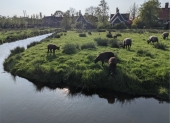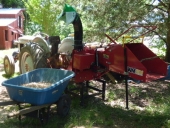If your path is wide enough for a reel mower (the kind you push and the blades spin), that might be a good option if your weeds are easy to cut. I'f found my
Fiskars Reel Mower doesn't cut through old, tall, or tough grass.
What weeds are you dealing with? That would also help determine which tool(s) might be best for you, as well as how often you have to maintain.
Sythes probably wouldn't be a good option for your paths, anyway, unless the paths are really big, as the scythes need quite a bit of swing to cut.
For my paths--which are usually overgrown by buttercup--I often use my new
Fokin hoe. It does a nice job of working in narrow paths, especially on my buttercup, which is easy to cut and tends to get pulled out by the hoe.
I tend to have to mow grass short every week or two in the growing season to keep it short. For buttercup, I have to go cut it at least once every week in the growing season if I want to keep it looking nice. I live in the raining Pacific Northwest (Seattle area) of the US, which is kind of like England, and so things really love growing here!









